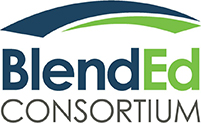HABITS
|
ACTIONS/BEHAVIORS
|
Engagement

|
- Asking excellent questions and making reference to the reading, video, or other content/assignments.
- Advancing the conversation by presenting evidence to support ideas.
- Engaging peers in discussion and building off of others’ contributions.
- Approaching the course with a constructive attitude.
- Taking part in class community (live or online discussions/chats, Zooms, Flipgrids, F2F/field trips, etc.).
|
Collaboration

|
- Consistently and actively working towards group goals.
- Encouraging participation of peers.
- Showing and expressing sensitivity to others’ ideas and contributions.
- Being open-minded, self-aware, fair, and responsible.
- Communicating clearly.
- Seeking/accepting accountability from peers/teachers.
|
Curiosity & Creativity

|
- Demonstrating a breadth and depth of ideas and questions.
- Geeking out on topics of interest.
- Brainstorming with imagination.
- Recognizing others’ great ideas.
- Producing high-quality, well-crafted, multidimensional work.
- Communicating/exploring ideas/concepts in multiple modalities.
- Embracing alternate methods, media, accidents, and playfulness.
- Accepting risk-taking and possible failure as an important part of the creative and learning process.
|
Time & Task Management

|
- Beginning assignments before due dates.
- Staying on task without needing reminders.
- Recognizing time constraints and plans ahead.
- Communicating proactively to request extensions
|
Tenacity & Resourcefulness

|
- Persisting when faced with new and challenging situations, concepts, or issues.
- Identifying and addressing areas for improvement.
- Asking for help without prompting.
- Supporting peers through challenges.
- Demonstrating significant effort to overcome and resolve problems.
|






